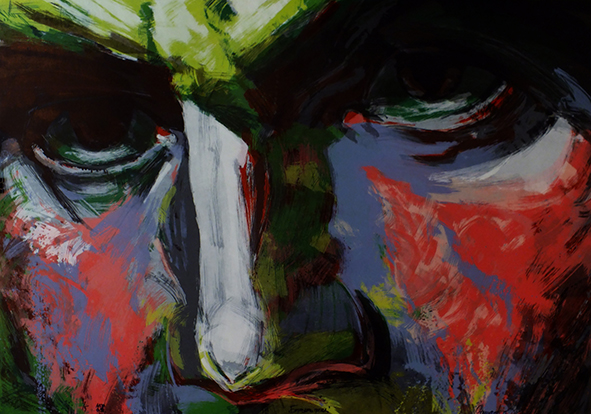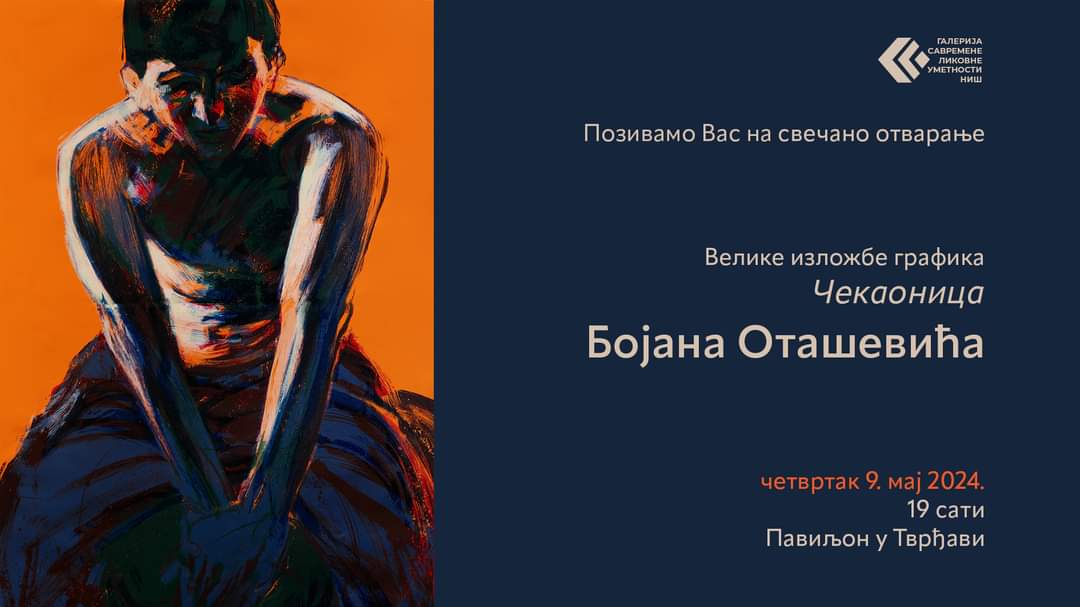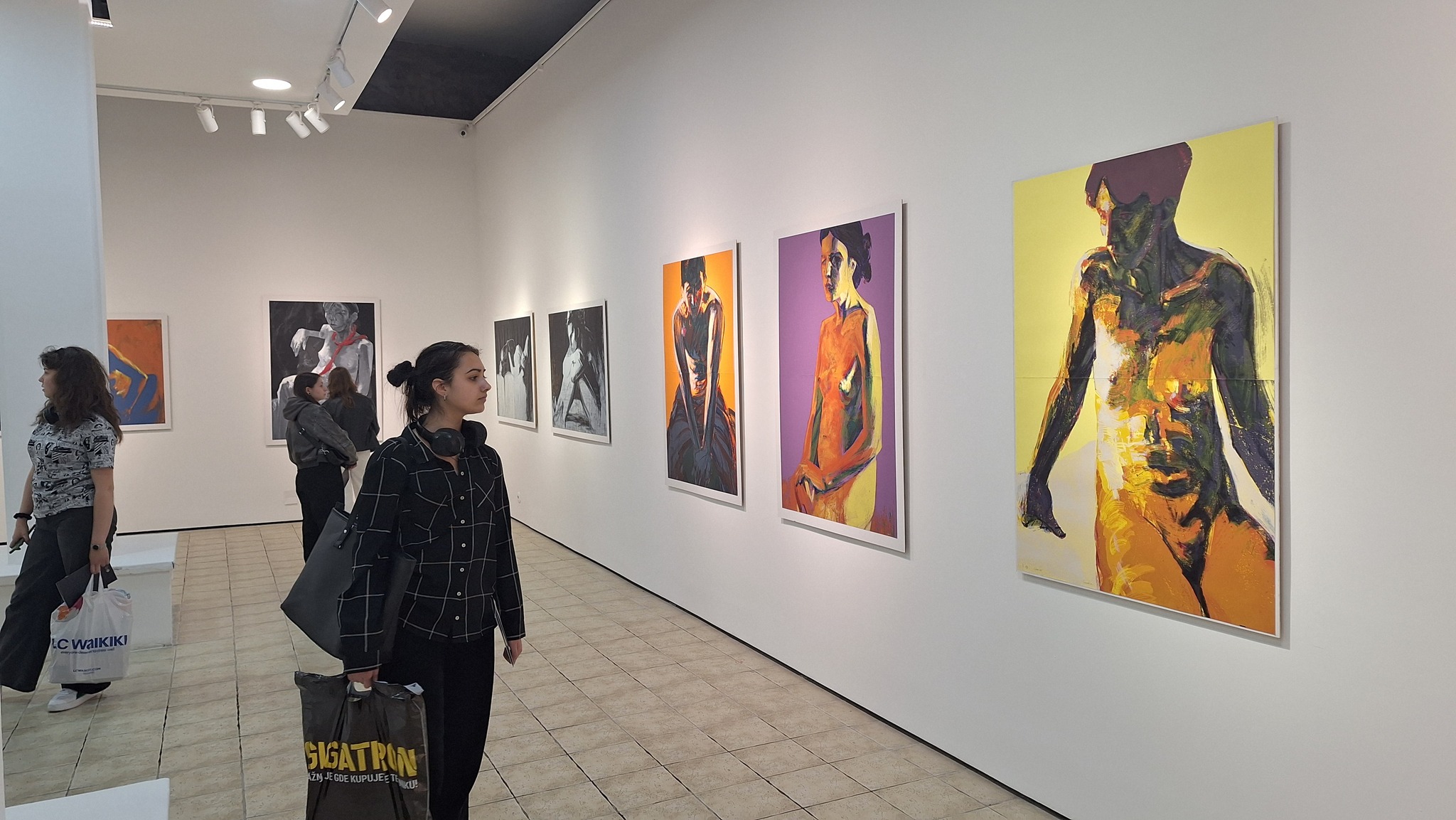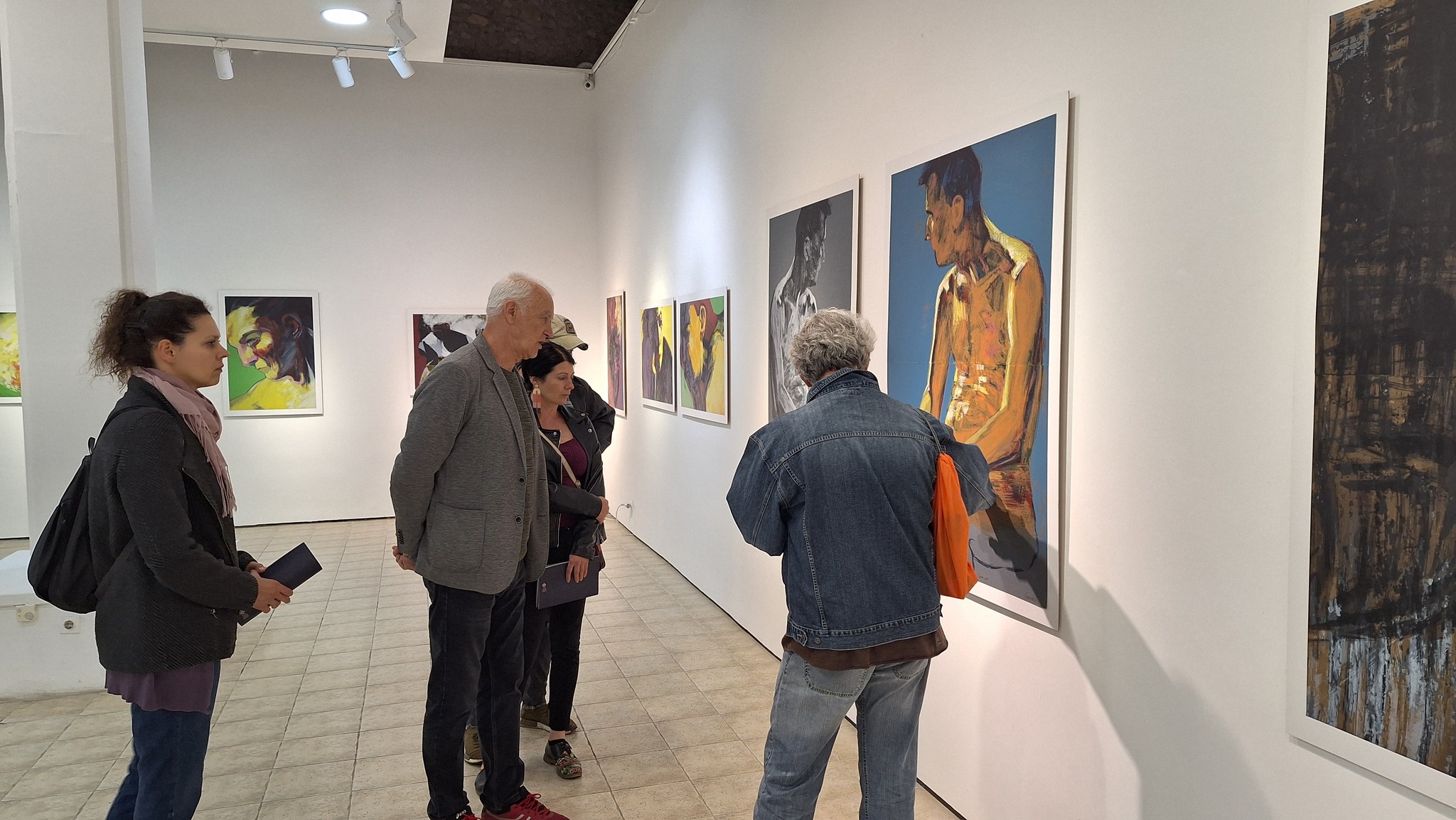У четвртак 9. маја, у Павиљону у Тврђави је отварна самостална изложба др Бојана Оташевића, редовног професора Филолошко-уметничког факултета у Крагујевцу. Изложбу чине графике великог формата из циклуса „Чекаоница“, настале у последњих десетак година а реализоване у техници алграфије са више бојених пролаза.
Бојан Оташевић више од двадесет година развија аутентичан опус који је компактан у својој јединствености и доследности. Од самих почетака определио се за свет фигурације, односно за традиционалан жанровски репертоар који доминантно почива на портретима и људским фигурама. Међутим, мотиве који стоје у основи ликовног изражавања од праискона, Оташевић користи као средство говора о актуелном друштвеном тренутку. Његове усамљене фигуре спуштених рамена и скрајнутог погледа , најчешће актови, су симбиоза стања отуђења и збуњености савременог човека затеченог у лавиринту постојећих збивања, која су таква да неминовно узрокују егзистенцијалну и емотивну забринутост над властитом судбином. Уметник фигуре представља у гро плану, често у седећем ставу, без покрета, али се иза те физичке статичност крије еруптивна унутрашња енергија, ковитлац мисли и осећања, што Оташевић постиже вештом комбинаториком ликовних елемената базираних на силини геста, односу светло-тамно и контарсном а раскошном колористичком спектру. Називајући свој најновији циклус графика „Чекаоница“ од безимених појединачних портрета и фигура Оташевић ствара неку врсту групног портрета људи са друштвених маргина који ишчекују нека боља времена а потенцијални су носиоци нужних промена.
Бојан Оташевић је рођен у Крагујевцу 1973. године. Дипломирао је, магистрирао и докторирао на Факултету ликовних уметности у Београду. Приредио је педесет самосталних изложби у многим градовима Србије и у Канади, Литванији, Босни и Херцеговини и Црној Гори. Добитник је 23 награде међу којима су значајна национална признања за графику: награда Златна игла УЛУС-а (2002), Мали печат (2015) и Велики печат Графичког колектива (2018) као и награде на међународним манифестацијама: Бронзана игла на 12. Интернационалном бијеналу „Сува игла“ у Ужицу, Велика диплома на 12. Међународном бијеналу портрета у Тузли и Специјално признање за допринос графици у свету на Тријеналу графике у Битољу.
Изложба ће трајати до 26. маја







